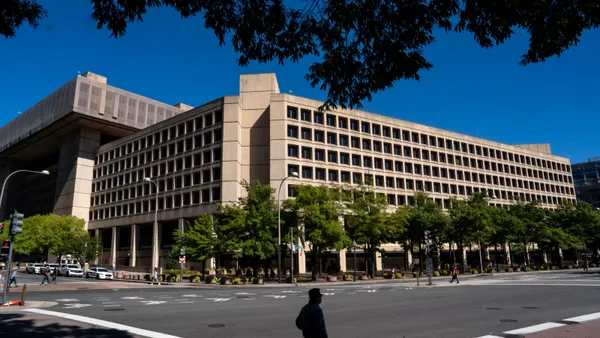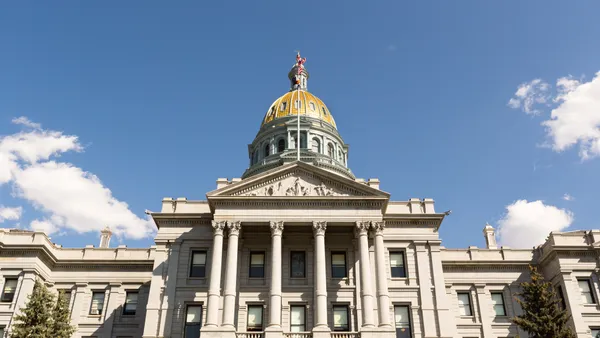Dive Brief:
- The U.S. Department of Energy awarded $90 million to help update local and state building energy codes across the country for greater energy efficiency, which can cut greenhouse gas emissions and utility bills and provide other benefits, the agency announced Wednesday.
- The awards will support 27 projects across the country, including workforce development programs and a new national network to support states and jurisdictions as they develop new codes.
- “Modernizing energy codes is one of the most cost-effective ways to improve energy efficiency in homes and businesses and make communities more resilient to extreme weather events,” the DOE said in a press release.
Dive Insight:
The Biden administration and many communities have set their sights on building codes as a key strategy to prevent and prepare for worsening climate change.
By requiring new and renovated buildings to meet minimum energy efficiency standards, building energy codes can substantially drive down greenhouse gas emissions and energy use from homes and businesses, according to the DOE. Depending on a community’s location, building energy codes may be set at the state or local level.
Homes built to today’s energy codes are 40% more energy efficient than those built 15 years ago, according to the department. Projections show that between 2010 and 2040, national model building energy codes could save U.S. home and business owners a collective $138 billion on their utility bills and avoid the greenhouse gas emissions equivalent of what 108 million homes would produce in a year.
The Federal Emergency Management Agency has also turned its attention to building codes, motivated primarily by the desire to improve disaster resilience rather than emissions reduction. As the agency grapples with increasingly expensive weather and climate disasters, it is encouraging communities to adopt modern codes shown to reduce costly damages.
Yet roughly two-thirds of U.S. communities haven’t updated the latest building codes, which the DOE attributes in part to a lack of resources. That’s where the $90 million in awards comes in. The largest award, $9.6 million, is going toward the establishment of the National Energy Codes Collaborative by a partnership led by the American Council for an Energy-Efficient Economy. Other partnership members include organizations of state energy officials, urban sustainability directors and HVAC engineers.
The collaborative will develop energy code implementation road maps and launch a fellowship program to “embed experienced building code practitioners in state and local agencies to provide technical assistance in code adoption, workforce development, implementation and compliance, and equity and environmental justice,” according to an ACEEE press release. The program will initially focus on supporting state environment and energy agencies in Colorado, Michigan, Louisiana and New Jersey, but it aims to expand to more states in the future.
The fellowship program will also host publicly accessible “convenings,” likely virtually and potentially in person, said Amber Wood, ACEEE buildings program director, in an interview. “People can come talk, we can have very focused conversations, we can bring in experts,” she said. “We can have discussions and hopefully provide additional capacity on topics.”
Wood noted that building energy codes are different from building performance standards. While building energy codes apply to new construction and buildings undergoing renovations, building performance standards apply to existing buildings, requiring them over time to reduce energy use and greenhouse gas emissions. Some cities are going as far as to mandate existing buildings eventually reach net-zero emissions.
However, the two policies — energy codes and performance standards — may work best hand in hand, Wood said. In Denver, the building performance standard is helping advance the energy code, she explained, since the community doesn’t want to construct new buildings that will eventually not meet the performance standards for existing buildings.
“We are starting to see in places that have both, these two policies kind of support each other,” she said.















